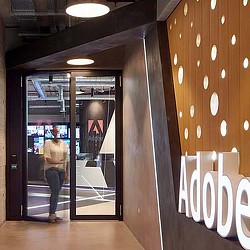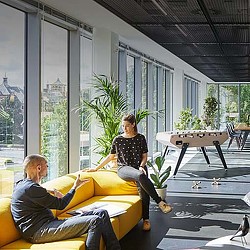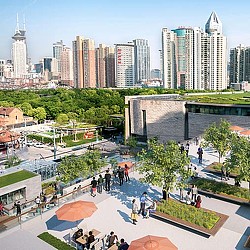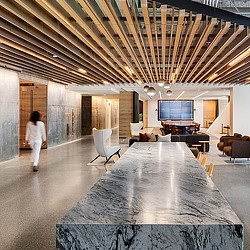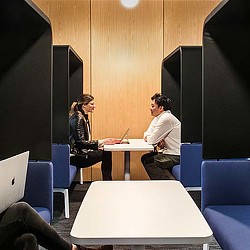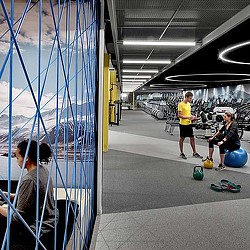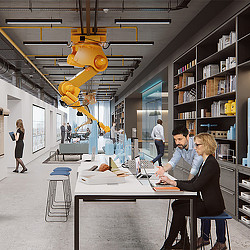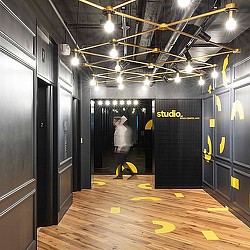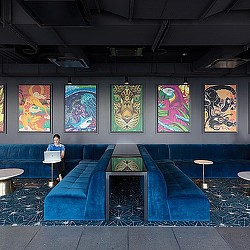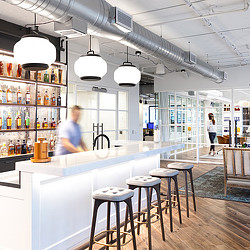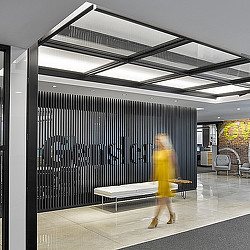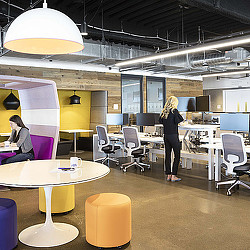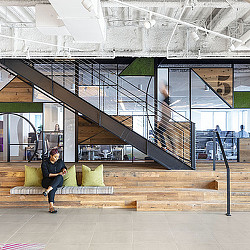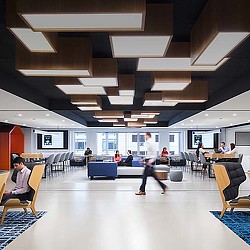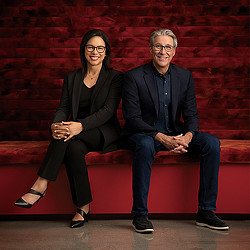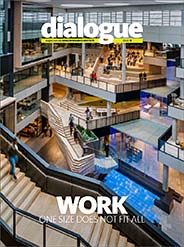Record low unemployment is putting enormous pressure on US companies and top organizations are seeking new ways to compete for the best and the brightest. In March, for example, a Barron’s article by Avi Salzman reported that we are facing a “great labor crunch,” including a shortage of at least 8.2 million workers across the US over the next 10 years.
In such unprecedented circumstances, the workplace has become an important strategic tool for top companies that want to attract and retain good people. The Gensler Research Institute has studied the relationship between workplace design and business outcomes, and identified four trends that are driving the future of the workplace. They can make the difference in recruiting and retaining the talent you want.
TREND #1: INDIVIDUAL + GROUP + COMMUNITY
Using its Workplace Performance IndexSM (WPI), the Gensler Research Institute has studied the shifting priorities of people in their workplaces and proven a good workplace incorporates three impactful building blocks. These workplaces:
- Improve the work environment at the individual level. We found that any form of workstation can be part of a high-performance workplace, including an open floor plan. But an individual’s workstation needs to be designed to support their particular work — taking noise, light, and layout into account.
- Provide collaborative workspaces to support group work. For knowledge workers to be functional and effective, they need a wide range of spaces equipped with places to meet — from small breakout spaces to larger conference rooms. These spaces should include technology, especially access to Wi-Fi and outlets.
- Empower the whole community. The WPI findings indicate that people are more effective when they work in a variety of spaces throughout the day, and that the spaces are accessible to everyone. Workplaces that give equal access to important amenities and working areas are higher performing, improving ROI.
However, the most important part of community is creating and communicating a common purpose and shared values. This is why generic, anonymous workplaces are problematic. The clear articulation of purpose in workplace design reinforces the organization’s goals, vision, and strategy.
TREND #2: THE WORKPLACE IS "ALWAYS IN BETA"
Technology is evolving faster than ever, and billions of new devices connect to the Internet each year. At the same time, investment in IoT technology continues at a blinding pace. The scope and scale of this unprecedented level of connectivity is revolutionizing how we think about the future of work and the workplace.
In the midst of such rapid change, organizations must develop strategies to determine where to direct their technology dollars and how to plan for an uncertain future. In response, their workplaces must adopt an “always in beta” mindset, recognizing that the workplace must go with the flow of constant experimentation and evolution.
TREND #3: EXPERIENCE MATTERS
Gensler’s Experience IndexSM — a rigorous research study focused on identifying and quantifying the factors that lead to a great experience — provides a roadmap for organizations looking to provide a differentiated workplace. The two most important catalysts for great experience are the integration of social space into every environment and a fluid mix of spaces.Today most experiences are multimodal, rendering single-use spaces obsolete. In terms of the workplace, this means there should be plenty of space to allow for all kinds of activities. As people seek to create an individualized workplace, organizations would do well to empower them to do so through a kit-of-parts approach. The Gensler Experience Index shows the growing importance of socialization at work to create employee engagement, retention, and overall levels of inspiration.
TREND #4: ACT LIKE A CITY
Cities are becoming more important on the world stage, with city dwellers representing the majority of Earth’s population for the first time in history. Cities can attract arrays of talent in dense clusters, and they are creating the innovation ecosystems that drive economic value creation. This allows the workplace to harness the creative diversity of the city, connect people in new and exciting ways, and foster the serendipitous encounters that lead to new ideas and innovations.
Indeed, the best workplaces function like the best cities. Some of the unique tenets of the urban experience can also serve as workplace design principles. These include characteristics like supporting higher density, diversity, walkability, a wealth of amenities, and a celebrated local culture.
A MORE HUMAN WORKPLACE
Qualities like “people-centric,” “technology-driven,” and “experience-rich” are earmarks of the most sought-after workplaces today. Consequently, they are connected with the most successful business outcomes.
The four trends shaping the future of the workplace suggest that we are headed toward a time when work and the workplace will be even more focused on optimizing human potential. In fact, I expect that the most successful organizations will be those that seize the opportunity to use workplace as the means to double-down on their greatest asset: their people.
Diane Hoskins is a Co-CEO at Gensler.
